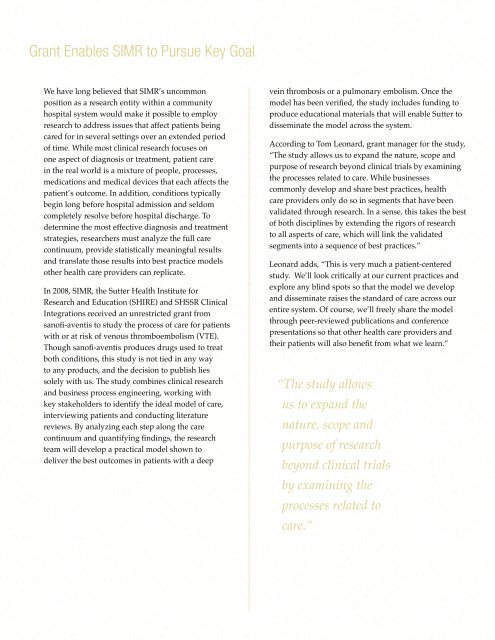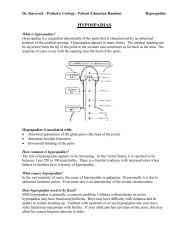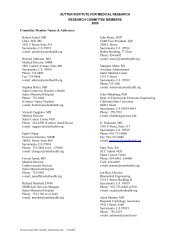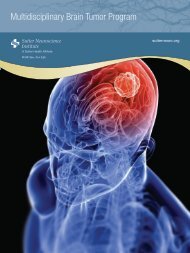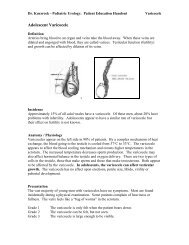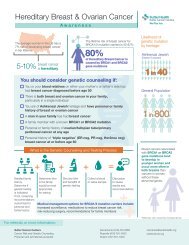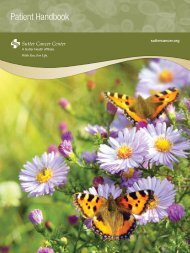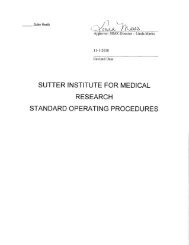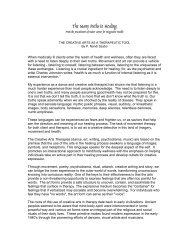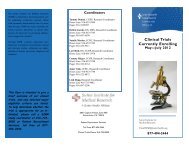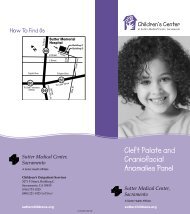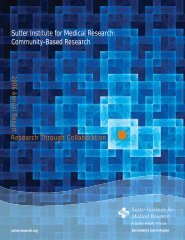Sutter Institute for Medical Research 2008 Annual Report
Sutter Institute for Medical Research 2008 Annual Report
Sutter Institute for Medical Research 2008 Annual Report
You also want an ePaper? Increase the reach of your titles
YUMPU automatically turns print PDFs into web optimized ePapers that Google loves.
Grant Enables SIMR to Pursue Key Goal<br />
We have long believed that SIMR’s uncommon<br />
position as a research entity within a community<br />
hospital system would make it possible to employ<br />
research to address issues that affect patients being<br />
cared <strong>for</strong> in several settings over an extended period<br />
of time. While most clinical research focuses on<br />
one aspect of diagnosis or treatment, patient care<br />
in the real world is a mixture of people, processes,<br />
medications and medical devices that each affects the<br />
patient’s outcome. In addition, conditions typically<br />
begin long be<strong>for</strong>e hospital admission and seldom<br />
completely resolve be<strong>for</strong>e hospital discharge. To<br />
determine the most effective diagnosis and treatment<br />
strategies, researchers must analyze the full care<br />
continuum, provide statistically meaningful results<br />
and translate those results into best practice models<br />
other health care providers can replicate.<br />
In <strong>2008</strong>, SIMR, the <strong>Sutter</strong> Health <strong>Institute</strong> <strong>for</strong><br />
<strong>Research</strong> and Education (SHIRE) and SHSSR Clinical<br />
Integrations received an unrestricted grant from<br />
sanofi-aventis to study the process of care <strong>for</strong> patients<br />
with or at risk of venous thromboembolism (VTE).<br />
Though sanofi-aventis produces drugs used to treat<br />
both conditions, this study is not tied in any way<br />
to any products, and the decision to publish lies<br />
solely with us. The study combines clinical research<br />
and business process engineering, working with<br />
key stakeholders to identify the ideal model of care,<br />
interviewing patients and conducting literature<br />
reviews. By analyzing each step along the care<br />
continuum and quantifying findings, the research<br />
team will develop a practical model shown to<br />
deliver the best outcomes in patients with a deep<br />
vein thrombosis or a pulmonary embolism. Once the<br />
model has been verified, the study includes funding to<br />
produce educational materials that will enable <strong>Sutter</strong> to<br />
disseminate the model across the system.<br />
According to Tom Leonard, grant manager <strong>for</strong> the study,<br />
“The study allows us to expand the nature, scope and<br />
purpose of research beyond clinical trials by examining<br />
the processes related to care. While businesses<br />
commonly develop and share best practices, health<br />
care providers only do so in segments that have been<br />
validated through research. In a sense, this takes the best<br />
of both disciplines by extending the rigors of research<br />
to all aspects of care, which will link the validated<br />
segments into a sequence of best practices.”<br />
Leonard adds, “This is very much a patient-centered<br />
study. We’ll look critically at our current practices and<br />
explore any blind spots so that the model we develop<br />
and disseminate raises the standard of care across our<br />
entire system. Of course, we’ll freely share the model<br />
through peer-reviewed publications and conference<br />
presentations so that other health care providers and<br />
their patients will also benefit from what we learn.”<br />
“The study allows<br />
us to expand the<br />
nature, scope and<br />
purpose of research<br />
beyond clinical trials<br />
by examining the<br />
processes related to<br />
care.”


